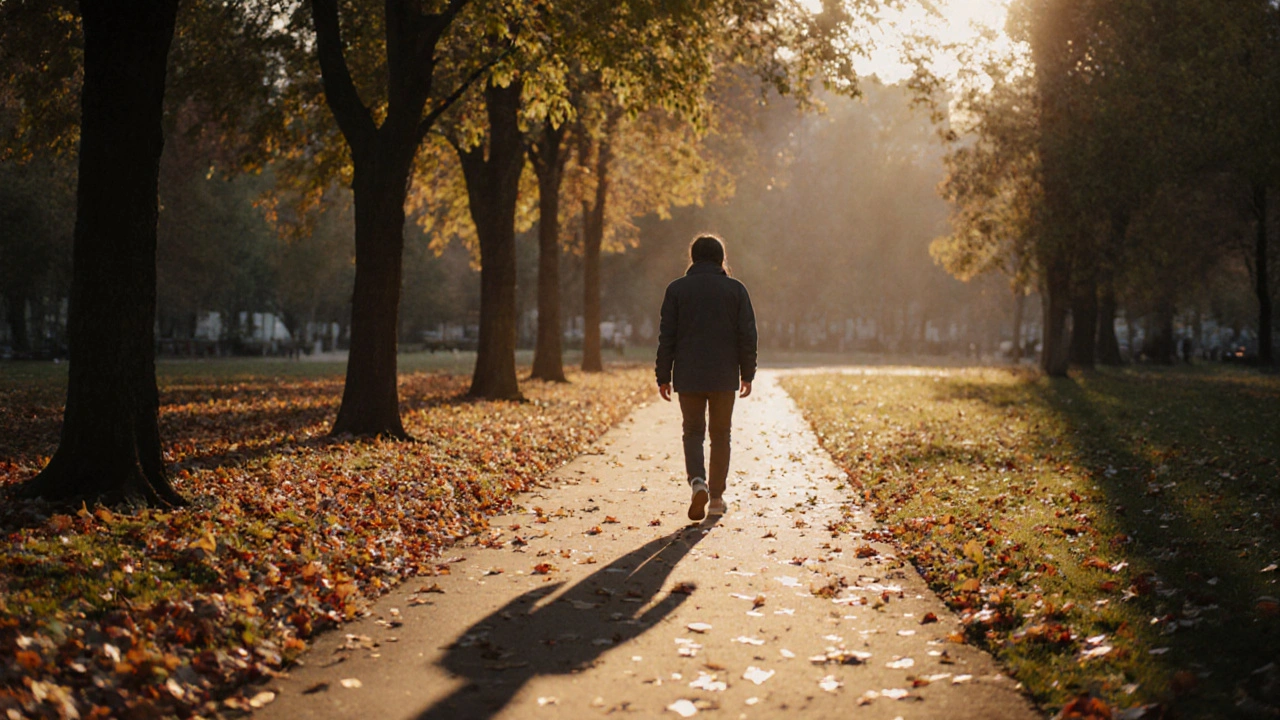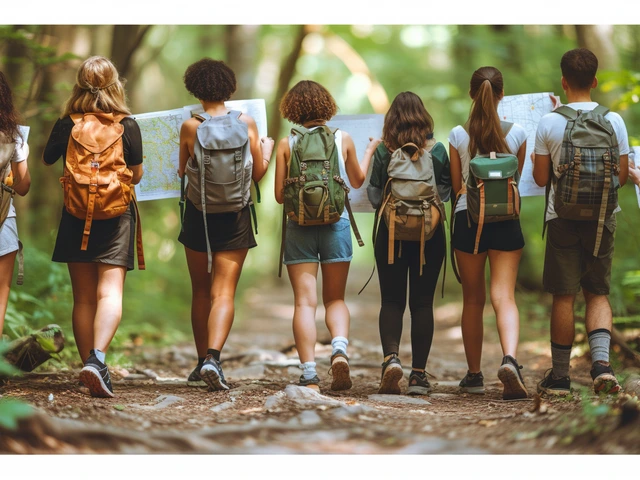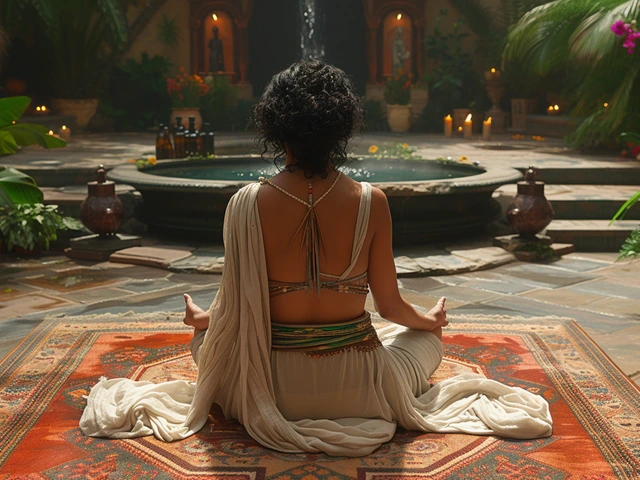
Calmness Impact Calculator
How your daily pauses transform your mind
Based on UCLA research showing cortisol reduction with regular calm moments
What you'll notice after 7 days
Your personalized calmness impact
Tip: Try the "One Breath, One Moment" technique from the article to start your practice.
Most people think mindfulness means sitting cross-legged, breathing deeply, and clearing your mind. But that’s not where it starts. It starts with calmness-quiet, simple, and often unnoticed. You don’t need a meditation app or a silent retreat to begin. You just need to stop chasing the next thing long enough to feel what’s already there.
What Calmness Really Is
Calmness isn’t the absence of noise. It’s not about being emotionless or detached. It’s the space between your thoughts and your reactions. It’s the moment you feel your heart race, but you don’t grab your phone. It’s when someone cuts you off in traffic, and instead of yelling, you take a breath and let it go.
Studies from the University of California, Los Angeles show that people who regularly experience calm states have lower levels of cortisol-the stress hormone-throughout the day. But here’s the catch: you can’t force calmness. Trying too hard to be calm makes you tense. It’s like trying to fall asleep by telling yourself to sleep. The more you chase it, the farther it runs.
True calmness shows up in small moments: waiting for your coffee to brew, walking to the bus stop without checking your screen, sitting quietly before bed. These aren’t practices. They’re pauses. And pauses are where mindfulness begins.
The Link Between Calmness and Mindfulness
Mindfulness is paying attention-on purpose, without judgment. But you can’t pay attention if your mind is screaming. Calmness is the quiet background that lets mindfulness happen. Think of it like a radio. If the static is too loud, you can’t hear the song. Calmness turns down the static.
When you’re calm, your brain shifts from the amygdala-the fear center-to the prefrontal cortex, the part that thinks clearly and makes choices. That’s not magic. It’s biology. And it’s why people who practice calmness regularly report better focus, fewer impulsive reactions, and less emotional burnout.
One woman I know, a nurse in Brisbane, started keeping a 30-second pause after every shift change. No phone. No talking. Just standing still, feeling her feet on the floor. After three weeks, she noticed she wasn’t snapping at coworkers. She wasn’t replaying arguments in her head. She was just… there. That’s mindfulness. Not meditation. Just presence.
How Calmness Builds Self-Awareness
Self-awareness isn’t about journaling every feeling or analyzing your childhood. It’s about noticing what’s happening inside you-right now. And you can’t notice anything if you’re running on autopilot.
Calmness gives you the space to see your patterns. Maybe you always reach for snacks when you’re tired. Maybe you get quiet when you’re upset instead of speaking up. These aren’t flaws. They’re signals. But you’ll never see them unless you slow down.
Try this: for one day, notice how you feel right before you react. Before you text back, before you say yes to something you don’t want to do, before you scroll again. What’s the physical sensation? A tight chest? A clenched jaw? A rush of heat? That’s your body talking. Calmness lets you hear it.
People who build self-awareness through calmness don’t become perfect. They become more honest-with themselves. They stop blaming others for how they feel. They start asking: What do I need right now? That’s the foundation of real emotional regulation.

Why Calmness Is the Missing Piece in Modern Life
We live in a world that rewards speed. Notifications, deadlines, endless to-do lists. We’re trained to believe productivity means constant motion. But that’s a lie. Your brain isn’t built for 24/7 stimulation. It’s built for rhythm-activity and rest, noise and silence.
When you skip calmness, you’re not just tired. You’re disconnected. From your body. From your emotions. From the people around you. You start making decisions based on fear-fear of falling behind, fear of missing out, fear of being seen as weak for needing a break.
Here’s what happens when you ignore calmness: you mistake exhaustion for motivation. You think anxiety is productivity. You believe being busy is being valuable. And over time, you lose touch with what actually matters to you.
Calmness isn’t a luxury. It’s a reset button. It’s the only way to step out of survival mode and into choice mode.
Simple Ways to Invite Calmness Into Your Day
You don’t need hours. You don’t need special tools. You just need to stop resisting stillness.
- Pause before answering: When someone asks you a question, wait two seconds before responding. Even if it feels awkward. That’s your space to choose your reply, not just react.
- One breath, one moment: Before you open your email, take one slow breath. In through the nose. Out through the mouth. Just once. Notice how your shoulders drop.
- Walk without a destination: Step outside for five minutes. Don’t check your watch. Don’t listen to a podcast. Just walk. Feel the air. Notice the colors.
- Turn off the auto-play: When a video ends, don’t let the next one start. Sit with the silence for 10 seconds. It’s uncomfortable at first. That’s the point.
- End your day with a question: Before sleep, ask yourself: What did I feel today? Not what I did. What I felt.
These aren’t exercises. They’re invitations. And each one is a doorway to mindfulness and self-awareness.

What Happens When You Make Calmness a Habit
After a few weeks of small pauses, something shifts. You stop trying to fix everything. You stop needing to be right. You stop measuring your worth by how much you accomplish.
You start noticing things you never saw before: the way your child smiles when they think no one’s looking. The quiet hum of the fridge at night. The way your breath changes when you’re anxious.
You become less reactive. More grounded. More present. Not because you meditated for an hour, but because you let yourself be still for ten seconds, ten times a day.
Calmness doesn’t solve your problems. But it changes how you carry them. And that’s everything.
Why This Isn’t Just Another Self-Help Tip
Most self-help advice tells you to do more: meditate more, journal more, breathe more. But calmness isn’t about adding something. It’s about removing the noise.
This isn’t about becoming a better version of yourself. It’s about remembering who you already are-when you’re not trying to prove anything.
You don’t need to be calm all the time. You just need to remember what calm feels like. So when the world gets loud again, you know where to return.
That’s the gateway. Not to enlightenment. Not to perfection. But to your own life.
Can calmness help with anxiety?
Yes. Calmness doesn’t eliminate anxiety, but it creates space between the thought and the reaction. When you pause before reacting to anxious thoughts, you stop feeding them. Over time, this reduces their power. Research from Harvard Medical School shows that regular moments of stillness lower activity in the brain’s fear center, making anxiety less intense and less frequent.
Do I need to meditate to be calm?
No. Meditation is one way to practice calmness, but it’s not the only way. Calmness happens in everyday pauses-waiting in line, washing dishes, walking to your car. The key isn’t the activity. It’s the awareness. You can be calm while doing anything, as long as you’re not rushing through it.
Why does calmness feel hard when I try to force it?
Because calmness isn’t something you achieve-it’s something you allow. Trying to be calm creates tension, which is the opposite of calm. Instead of forcing it, invite it. Notice one thing you can feel right now-the weight of your body, the sound of your breath. That’s enough. You don’t need to fix anything.
How long does it take to notice the benefits of calmness?
Some people feel a shift after just a few days of small pauses. Others take weeks. It’s not about time-it’s about consistency. One quiet moment a day, repeated daily, rewires your nervous system over time. You won’t wake up transformed. But you’ll wake up noticing more.
Can calmness improve relationships?
Absolutely. When you’re calm, you listen better. You respond instead of react. You stop taking things personally. People feel safer around you because you’re not emotionally reactive. That builds trust. Real connection starts when both people feel heard-not when they’re trying to win an argument.





